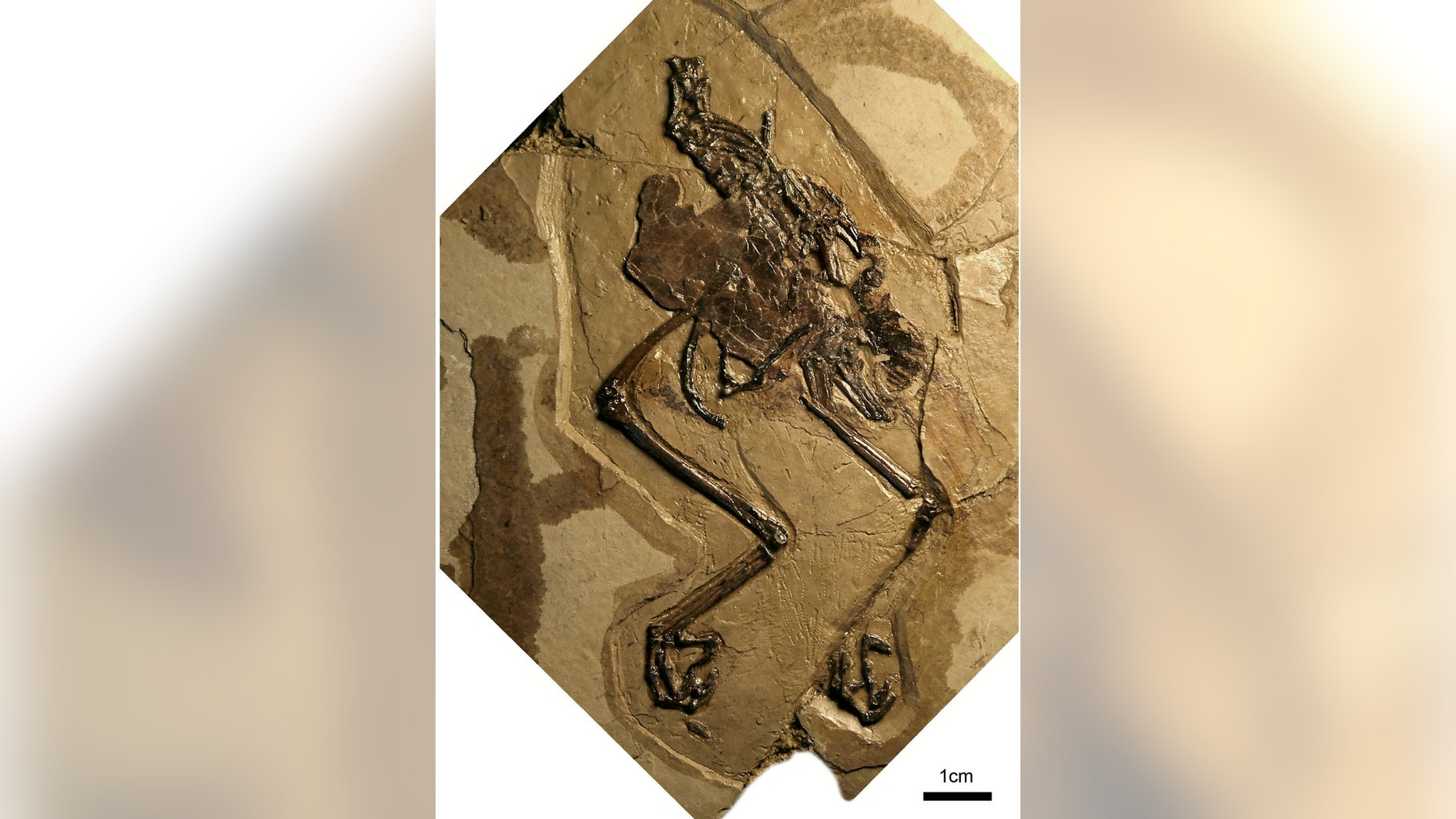



attached FoxNews.com/Science ^ | Feb 8, 2019 | Chris Ciaccia | Fox News
A 52-million-year fossil of a "perching bird" has been found in Wyoming with its feathers still attached, a discovery that "no one's ever seen before."
Also known as passerines, the perching bird was discovered in Fossil Lake, WY. Passerines are well-known for eating seeds, as most modern-day birds do and account for approximately 65 percent of the 10,000 different species of birds alive today.
"This is one of the earliest known perching birds. It's fascinating because passerines today make up most of all bird species, but they were extremely rare back then. This particular piece is just exquisite," said Field Museum Neguanee Distinguished Service Curator Lance Grande, author of a paper on the bird, in a statement. "It is a complete skeleton with the feathers still attached, which is extremely rare in the fossil record of birds."
The study has been published in the scientific journal Current Biology.
Now known as Eofringillirostrum boudreauxi, the bird had a "finch-like beak," similar to modern day finches and sparrows, which could give clues as to its diet.
(Excerpt) Read more at foxnews.com ...



One hundred million years ago, the sky was filled with birds unlike those seen today, many with long, streamerlike tail feathers. Now, paleontologists have found examples of these paired feathers preserved in exquisite detail in 31 pieces of Cretaceous amber from Myanmar. The rare 3D preservation reveals the feathers’ structure is completely different from that of modern feathers—and hints that they may have been defensive decoys to foil predators.
Such tail streamers—in some cases longer than the bodies—have been observed in early bird fossils from China for several decades, in particular, the 125-million-year-old Confuciusornis sanctus. They may also be present in some feathered dinosaurs. Scientists have long thought the feathers were ornamental, similar to the tail feathers in some modern hummingbirds and birds of paradise—and that they may have been unique to either males or females, as only a subset of fossils of some species possess them.
But most of those fossils are squished almost flat, making the structure of the feathers near impossible to study. “These new discoveries change the game—the fossils are astoundingly beautiful,” says Steve Brusatte, a palaeontologist at the University of Edinburgh who was not involved in the work.
Now, an international team of researchers, led Lida Xing at the China University of Geosciences in Beijing, have analyzed these feathers, many of them found paired, in 31 pieces of 100-million-year-old amber from Myanmar. “They are the weirdest feathers I have ever seen,” says co-author Jingmai O’Connor, who studies fossil birds at the Institute of Vertebrate Paleontology and Paleoanthropology in Beijing.

In most of the conventional fossils with tail streamers from China, the birds and their feathers are squashed almost totally flat. “The way we interpreted these feathers from compression fossils was basically completely, entirely wrong,” O’Connor says. “Looking at them in three dimensions preserved in amber, I was astonished.”
In all modern feathers, the central shaft or rachis is a hollow tube. But the ancient ribbonlike tail feathers are fundamentally different, with a shaft that’s more like a half-cylinder, flattened and open on one side. They also have significantly reduced feather barbs on either side of the shaft, compared with modern flight feathers. These tail streamers would have stuck out straight and rigid, like an extended tape measure, explains co-author Ryan McKellar of the Royal Saskatchewan Museum in Regina, Canada.
But the streamers were also insanely thin. “The thickness of the rachis in some specimens is 3 microns thick. That’s less than the size of the average cell,” O’Connor says. (Human red blood cells are about 7.5 microns thick.) “How could something be so thin and maintain structural integrity?” She believes the thinness and the half-formed shaft were a way to economize, making the feathers much less energetically demanding to produce.
As the authors argue today in the Journal of Palaeogeography, the thin shaft and other clues suggest these feathers were highly disposable, similar to the detachable tail of a lizard, and may have helped ancient birds escape the clutches of predators. The fact that so many paired streamers have been found in amber—fossilized tree resin—without the body of the bird, suggests they were plucked out easily when stuck in the resin. To McKellar, that suggests a defensive role. “You’re giving the predator a nonlethal target that’s half the size of your body.”
That’s a speculative idea, says Gerald Mayr, an ornithologist at the Senckenberg Research Institute and Natural History Museum in Frankfurt, Germany. But he finds the half-open feather shafts highly intriguing. “This [structure] suggests significant developmental and functional differences to the feathers of living birds.”

Unusual feathers preserved in 100-million-year-old Cretaceous amber could have been used as defensive decoys
Pierre Cockx/RSM
Jurassic Park, China
*ping*
Very interesting. Thanks for posting.
“Incredibly well preserved”. In other words, yet more proof that dinosaurs were around much more recently than evolutionary scientists care to admit!
This will undoubtedly get filed away with the various dinosaur remains that had intact blood, collagen, and even DNA. As if any of those things have a hope of being preserved for millions of years. They will keep on ignoring the various artifacts that show men and dinosaurs together from native Indian and Inca civilisations. They will also ignore the descriptions of dinosaur like creatures in the Travels of Marco Polo or in the book of Job.
why is momma bird called ‘so-called mother’ and ‘mother bird’ in quotes?